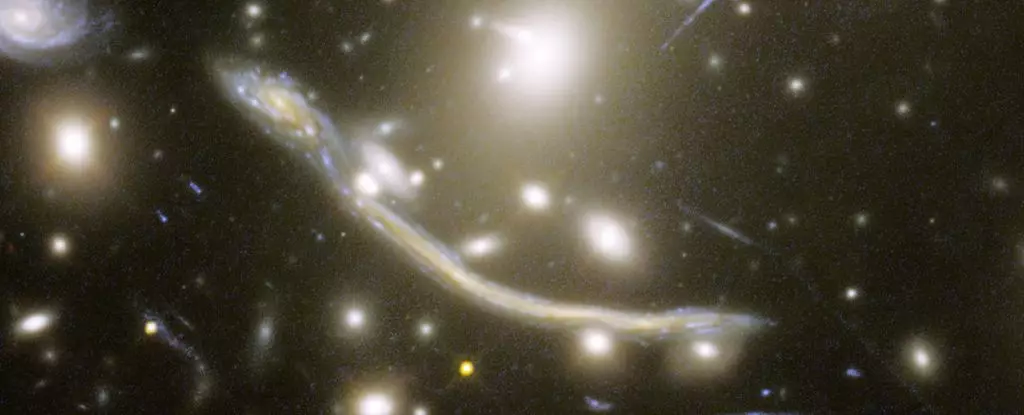The vastness of space presents immense challenges to astronomical observation. Traditionally, our gaze has been limited by the constraints of the tools at our disposal, making it difficult to dissect the early Universe’s rich tapestry. However, the advent of the James Webb Space Telescope (JWST) has revolutionized our perspective, allowing scientists to peer deeper into the cosmos than ever before. With its ability to resolve individual stars in distant galaxies, JWST is not just enhancing our understanding of the universe; it is reshaping it.
For decades, the Hubble Space Telescope set the benchmark for astronomical observation, revealing countless galaxies but only managing to resolve a handful of individual stars in each. A significant leap forward has been realized with JWST’s recent findings, uncovering more than 40 distinct stars in a galaxy located nearly 6.5 billion light-years away. This achievement astoundingly demonstrates that astronomers can now view stars that were previously mere pixels in the cosmic panorama—a feat once thought impossible. Fengwu Sun, an astrophysicist from the University of Arizona, underscores this momentous occasion, emphasizing the potential for analyzing the dark matter surrounding these stars and the galaxies they inhabit.
The Mechanics of Gravitational Lensing
One of the vital concepts enabling this advancement is gravitational lensing—a phenomenon described by Einstein’s theory of general relativity. When light from distant stars passes near massive objects, such as a cluster of galaxies, the bending of space-time creates a fantastic effect. The massive galaxy cluster Abell 370, located approximately 4 billion light-years away, acts as a gravitational lens, creating a visual distortion of the light from background galaxies, including the Dragon Arc—a feature that resembles a sinuous dragon in the night sky. Here, astronomers can decipher images that appear jumbled as a result of gravitational warping. By meticulously reverse-engineering this lensing process, they can reconstruct these celestial images, revealing a clearer and magnified view of the distant cosmos.
Beyond the grand cosmic structures, the space between these celestial bodies contains individual stars, often overlooked. The phenomenon of microlensing, where smaller masses impart additional gravitational influences, has facilitated the resolution of isolated stars within the Dragon Arc’s smeared light. By leveraging these myriad effects, a team led by astronomers in Japan has successfully identified an impressive 44 individual stars—an unprecedented accomplishment for distant astronomical observations. Sun expresses the thrill of this discovery, highlighting the serendipity involved in uncovering these stars while initially seeking distant galaxies. The identification of so many stars in such a remote environment speaks volumes about the capabilities of the JWST.
The observations conducted have also yielded intriguing insights regarding the nature of these stars. The majority of those identified within the Dragon Arc are classified as red supergiants. These massive stars are characterized by their expansive, cooler, and redder appearances, representing an advanced evolutionary state. This finding is particularly significant as it contrasts sharply with the typically observed hot, blue stars found in more proximate environments. Moreover, the JWST’s enhanced capacity to detect less luminous, red light gives it a tactical advantage over other telescopes, facilitating the visibility of these cooler stars that often elude observation.
The Future of Cosmic Exploration
As observations continue, the JWST promises to unveil even more hidden celestial treasures within the blurred remnants of the Dragon Arc. Each star identified paves the way for a deeper comprehension of the genesis and evolution of galaxies far removed from our own. The implications of these findings extend beyond mere stargazing; they implicate our understanding of cosmic history, the formation of structures, and the interrelation of matter throughout the vast expanse of the Universe.
The groundbreaking advancements made possible by the JWST mark a significant leap in our understanding of the cosmos. By overcoming the historical limitations imposed by distance and visibility, astronomers are revealing the remarkable intricacies of the Universe. As we continue to unravel the mysteries of distant galaxies through this powerful instrument, we find ourselves compelled to reassess our place within the grand narrative of cosmic evolution. The journey into the depths of space is, undoubtedly, just beginning.

Leave a Reply